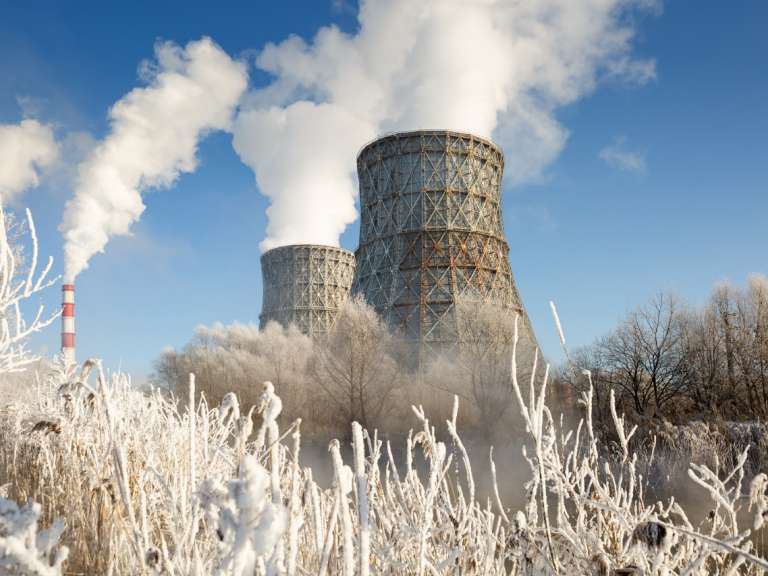Seasonal Readiness Planning: How to Prepare Your Plant for Extreme Weather
Jeremy BowdenHere's a guide to seasonal readiness planning for the winter and summer months.

Seasonal readiness planning is key to avoiding any adverse impact of weather on power plant operations and maintenance. Asset managers should implement inspection and maintenance activities that protect system components and prevent weather-related equipment damage and failure. Plant and asset managers should both prepare for inclement weather every year ahead of the season in question to ensure that the plant is able to continue operating as needed, and educate plant staff on seasonal issues so any unrelated work does not affect protective measures.
Seasonal readiness planning can include preparation, execution, and restoration elements. It's also important to track the effectiveness of seasonal preparation efforts to ensure that the lessons learned are captured year after year to improve the overall process.
A set of seasonal readiness guidelines for the US is available from the Electrical Power Research Institute (EPRI). It includes tasks to carry out prior to summer and winter seasons to ensure that your equipment is ready for the weather extremes that accompany both. The guidelines also cover: the formulation of a seasonal readiness cycle for an operating fleet, the development of technical content and activities for seasonal readiness, and examples of tracking sheets and checklists.
Seasonal readiness tasks can be incorporated into computerized maintenance management systems (CMMS), which will automatically trigger precautionary activities, track their completion, and give priority status to seasonal deficiencies entered as future jobs. Readiness can be further prioritized by not allowing the sign-off on other maintenance jobs until lagging, heat trace, or other weather-proofing measures have been completed or reinstated.
In the US and much of the northern hemisphere, winter brings the most regular disruptive weather conditions with potentially prolonged, penetrating low temperatures and freeze–thaw conditions. Winter readiness activities are principally aimed at the prevention of freezing, along with problems caused by sharp temperature fluctuations, such as condensation formation in problematic places.
Prevention also involves inspection and maintenance to ensure effective heating provision in all areas. The EPRI recommends that designed and as-built measures are provided, but also that operating plants have portable back-up heaters.
In periods of extreme cold and wind, as experienced in the US during the polar vortex winter of 2014, heat-tracing capabilities can become overwhelmed. Even minor damage to thermal insulation can expose piping, tubing, and other components to freezing during these types of below-average or below-design-basis temperatures. To prepare for extreme cold, asset managers can add retrofits to equipment for added protection, such as heated housings for instruments and more complete insulation coverage.
Power plants need to educate O&M staff on the effects of their actions on freeze potential in plant systems. Prior to each winter season, asset managers should initiate a review of winter-proofing practices to focus on where the freezing conditions are most likely to occur. The most effective programs are focused on inspection and repairs in the early spring and summer months, but preparations can be left until the fall, provided the job is done before any early cold snap.
Winter preparation should also include reviewing the material condition of the plant, verifying that buildings are properly insulated and sealed from the elements, and developing contingency plans for the most extreme weather.
Summer readiness involves preparation for higher temperatures and sometimes humidity. Elevated summer temperatures have the potential to reduce output, degrade heat rate, and create operational challenges for plant staff. High temperatures can also cut the working life of equipment by degrading lubrication quality or causing electronic component failures. High humidity combined with elevated temperatures during the day can result in condensation forming at night in unwanted places.
Summer readiness typically consists of cleaning and checking the condition of heat transfer equipment. Failure to do so can result in unexpected alarms and trips due to high lube oil temperatures, as well as hampered performance. Examples of summer preparations include cleaning accumulated dust and debris out of finned tube heat exchangers to improve heat transfer and cleaning accumulated sludge and bio growth out of sumps and cooling tower fill. Staff should also check the temperatures of closed-cycle cooling water and other closed fluid systems that are cooled by direct heat transfer.
While the most challenging weather is related to temperatures during the winter and summer seasons, a number of other weather conditions can affect power plant operations throughout the year, including thunderstorms, hurricanes, tornadoes, flooding, drought, wind, and sand storms—all of which have their own set of preparations, depending on local conditions.
Plant and asset managers should direct effective seasonal readiness planning by starting with a thorough initial assessment based on prevailing local conditions. Capturing the lessons learned every year ensures that your seasonal preparations improve on a continuous basis and adapt to any change in weather patterns. The plan should include contingencies and will help ensure reliable generation for the grid, while reducing hazards to personnel.
Power plant automation is alleviating more than just maintenance troubles—it's also tackling workforce management issues.
Improving flexibility and efficiency at low loads can enhance steam plant profits, along with lowering maintenance costs.
Successful rotor life management requires strategic and proactive planning that takes into account potential market and legislative changes.